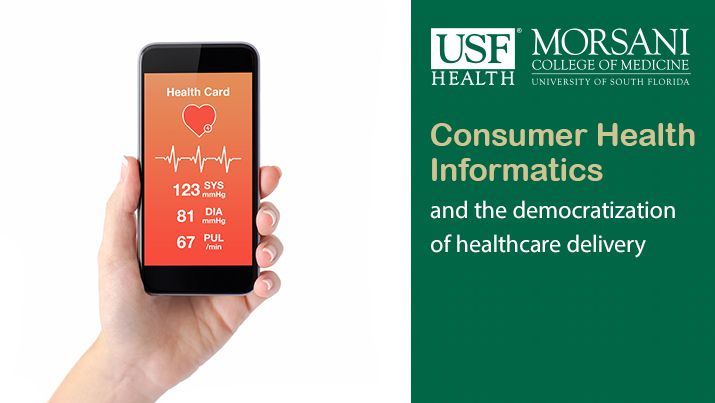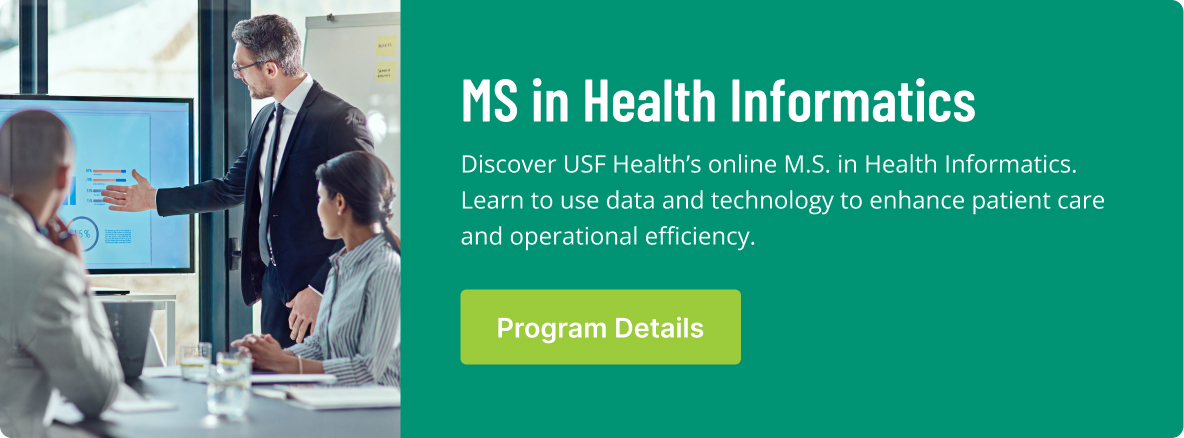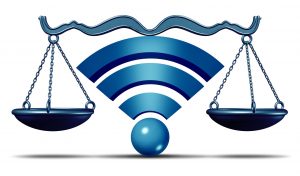Consumer health informatics examines patient information from points of view such as health literacy, consumer knowledge, and education. The goal is to empower patients while giving them the knowledge they need to make their own health decisions. Consumer health informatics couples the consumers’ needs for information with their healthcare preferences to create a tailor-made medical experience.
The National Center for Biotechnology defines consumer health informatics (CHI) as:
- Any tool or system primarily responsible for interacting with health information users or health information consumers
- Any tool into which a patient inputs their health information and receives a body of health information
- A tool or system where information or other benefits may be used with the assistance of a healthcare professional but doesn’t necessarily depend on a healthcare professional.
Consumer Health Informatics Applications
Patients are taking more responsibility for managing their health information. They organize their medical histories, lab findings and medications, so they need health IT applications specializing in organizing this information. Apps are built with patients in mind, showcasing features allowing users to share and sort information, giving them more control of their care.
Some categories of CHI apps include:
- Apps facilitating knowledge and understanding of disease management.
- Apps facilitating the knowledge of observations of daily living (ODLs).
- Apps facilitating and promoting lifestyle management assistance.
- Apps facilitating patient health, preventative care and self-care/assisted care.
Health IT applications are being created for the Web, different messaging systems, and for mobile platforms, making them as convenient as possible for the patients who use them. CHI apps use reminders and prompts to provide up-to-date information on users’ health, reviewable by both patients and health providers. The apps also utilize support groups on the web so patients can communicate with each other about different medical subjects.
3 Examples of Health IT Applications
Health systems vary depending on patients’ needs. Here are a few examples of health IT applications and how they help patients take charge of their medical documentation.
Self-Management Systems
Self-management systems are highly varied and use multiple platforms. The best systems provide a timely response with information regarding the user’s current health status. Some technologies monitor blood pressure or blood glucose. That information can be received from the provider or directly from the system.
Electronic Personal Health Records and Patient Portals
Electronic personal health records (PHRs) contain an individual’s health information conforming to nationally recognized standards. The information can be pulled from multiple sources while it’s managed and controlled by the user. Information found in PHRs includes personal identifiers, contact information, medication history, allergies and immunizations.
Peer Interaction Systems
Peer interaction applications can operate alone or as part of a set of applications. These applications use online forums and discussion groups to help patients communicate with others who have similar conditions.
The Importance of Consumer Health
Consumer health informatics standards, in conjunction with health IT applications, are changing healthcare. Many health IT applications serve a specific purpose or function while some work in tandem. Regardless of their individual purposes, these apps are creating an encompassing patient healthcare system, giving users more control of their own paths to achieving and maintaining healthy lifestyles.




